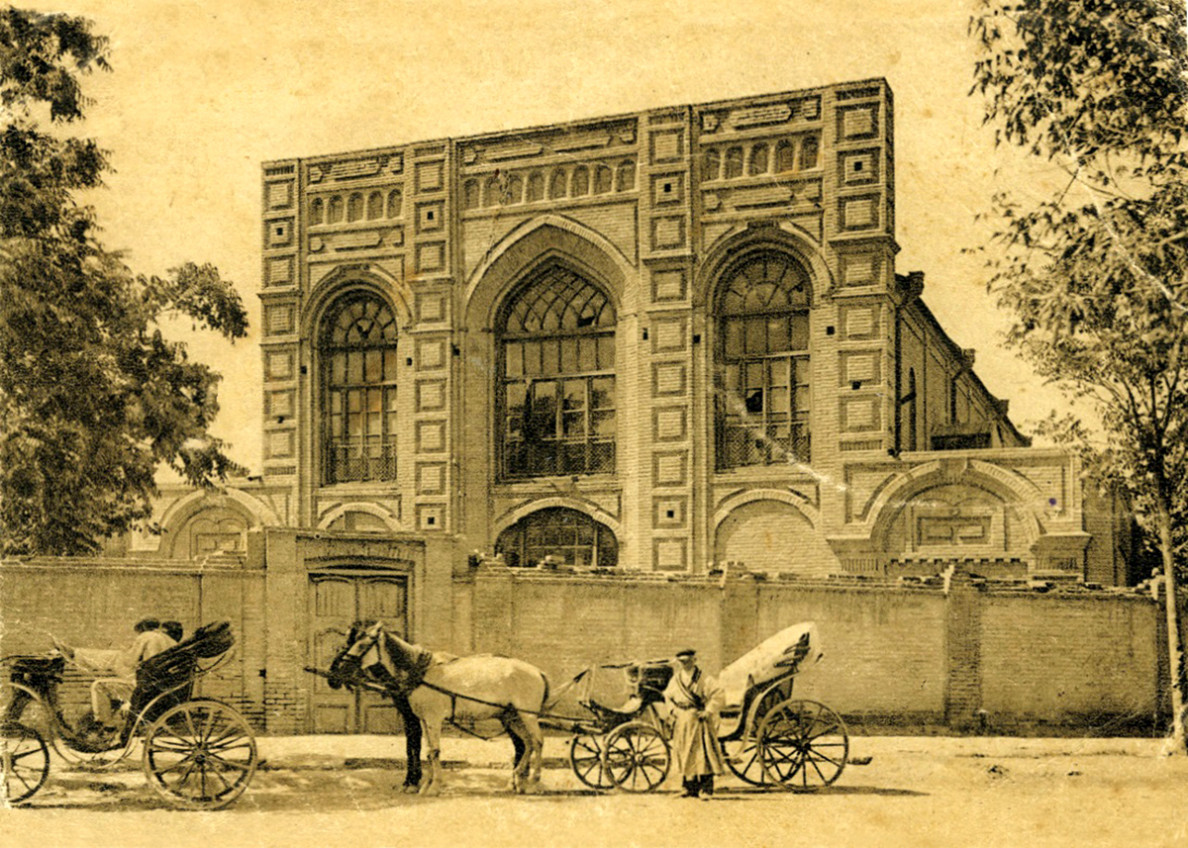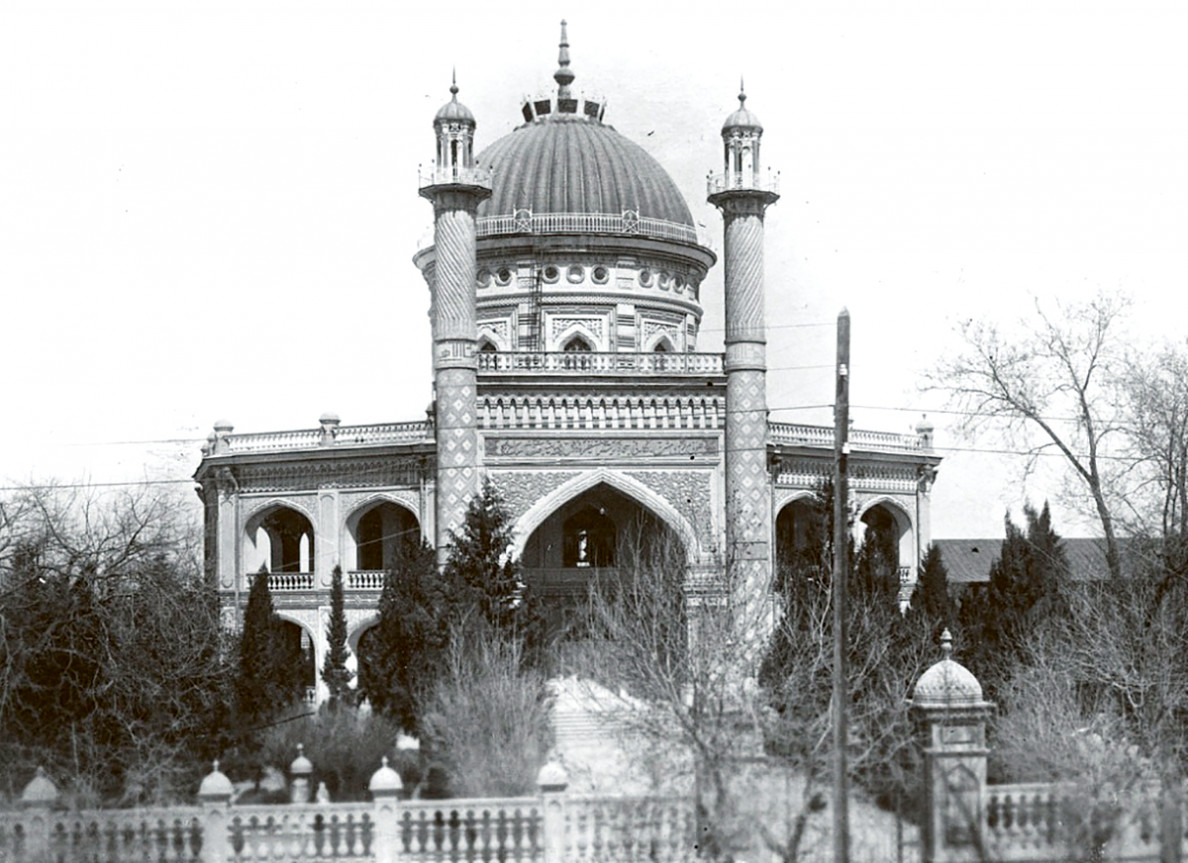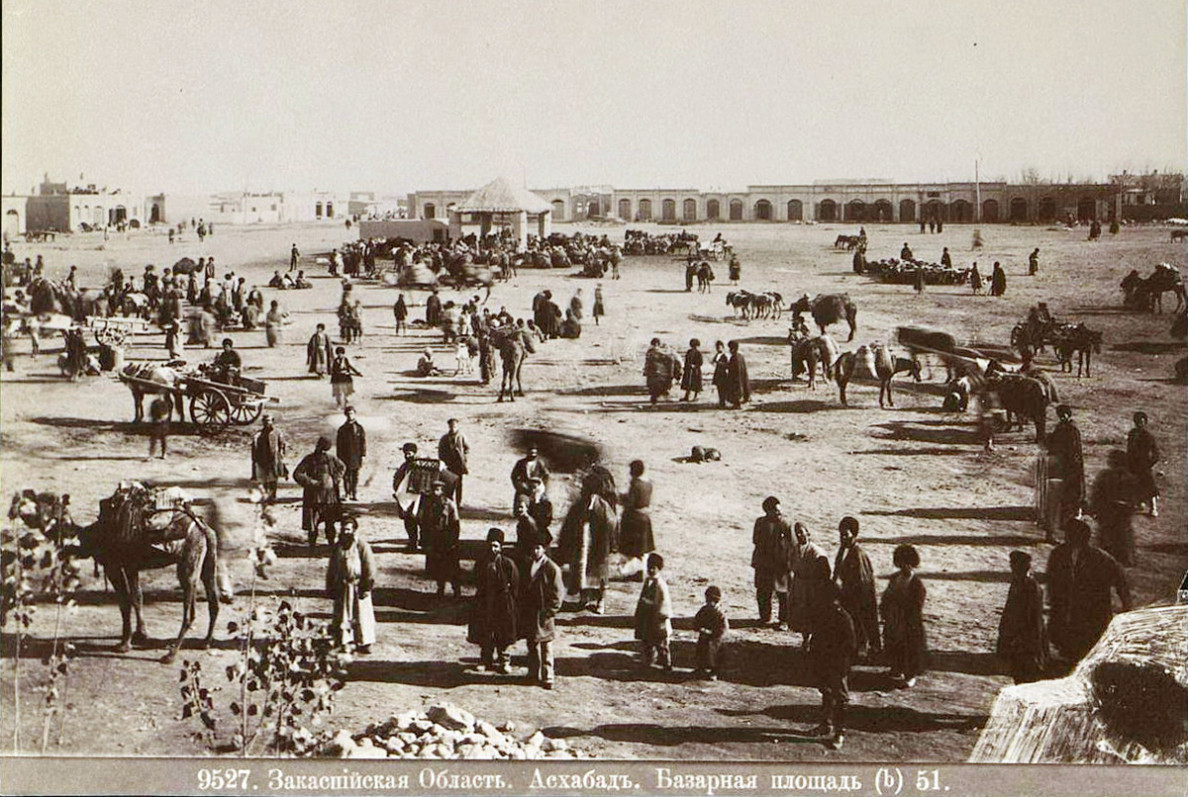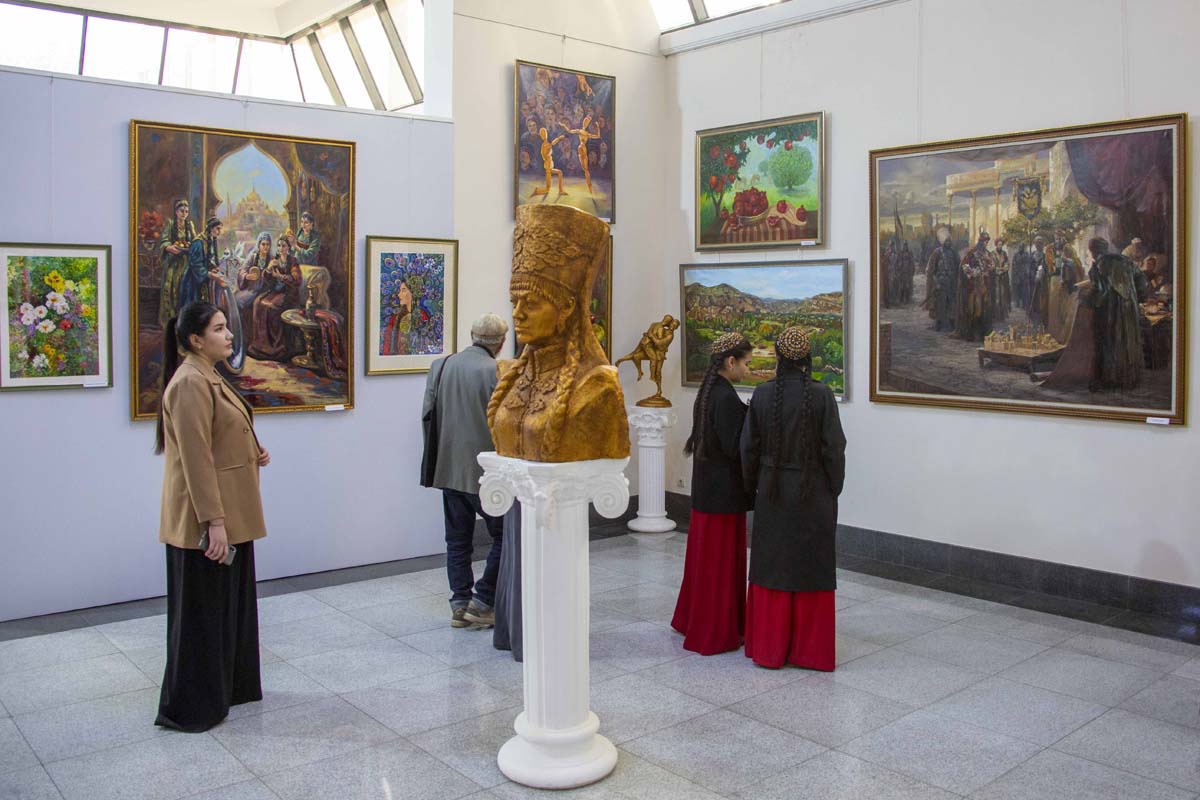On the threshold of the 140th anniversary of Turkmen capital, it is worth to look back and recollect what Ashgabat was started from, what forestalled its origination and what stages of history left traces in its current image. This city, which is loved by all generations of Ashgabat’s residents, has its unique image and now, being under dynamic development, is original like it was in the past. Architectural historian Ruslan Muradov continues speaking about this.
The beginning of the XX century was marked by the first cinema demonstrations, electricity, automobiles, which were very rare at that time and significant highlight of cultural life, in Ashgabat. Despite the fact that the city was located at the outskirts of the empire, it was not isolated from the world and had all benefits required by Europeans who came to live in the city.
A journalist, who travelled by Caspian railroad back in 1900, has written describing Ashgabat: “… it appeared to be original for me, not any other city in Russia can be compared to it. It is filled with plants and at the same time, surrounded by dust”. With regards to the city architecture, the author said the following: “The houses just like soldier in a line strike with its similarity. Nothing original and outstanding. Everything is made by standards and placed according to the ranks… there is nothing to catch and please an eye”. At the same time, Ashgabat in the first years of the XX also had a provincial charm and comfort, which decades after was remembered with details by the famous Russian writer Vasyli Jan who served in this place in 1901 – 1904:
“It was a small clean town made of numerous clay-brick houses surrounded by fruit gardens, with straight streets designed by military engineer, planted with slender poplar, chestnut and white acacia trees. There was no walkways as we understand but water ways with clear water from the mountains was running along the streets.
… All the buildings in the town was one-stored. It was prohibited to build other buildings but light construction single-store ones after several earthquakes, city museum was the only double-store building. The town woke up and went to sleep by the signals from the fortress. Sounds of trumpet playing alarm, monotonous voices of soldiers singing morning and evening pray were heard in clear air at the dusk and dawn.
The population of the town was small. The Russian part mostly contained military personnel and officials with their families. Usually, each Russian family bought or most often built one –store house surrounded by little garden. Everybody who wished to stay for a long time in Ashabat asked for a piece of land, which was given from the lands in direction of Kyoshy settlement, and received a loan for construction of the house”.
In 1902, craftsman hood, which spontaneously appeared behind the railroad and is known in the city slang as ‘Hitrovka’, has been included to the city. Back in those times, Ashgabat was a place of exile of politically unreliable people from the center of Russia. Many social democrats used to come here with special tasks from Baku and Tiphlis. Several revolutionary organizations, which further united to illegal group of Ashabat social revolutionists, have been established using their help in 1904. When the first Russian Revolution has started in the Empire, they held meetings, demonstrations and strikes promoting their ideas, agitated soldiers and managed to raise the strike of Ashabat’s garrison. However, the revolutionists were not supported by the city residents and the organization broke up in 1908.
In 1905, Ashabat has got the second entry to the central parts of Russia by railroad through Tashkent. Its role as a transit center has grown after Russia and England have shared the spheres of their interest in Persia in 1907. Connections of Asgabat with Iranian Khorasan Province started to increase. Melodic sounds of bells were heard more often on the streets of the city – it was caravans of camels stretched for dozens and hundreds of meters walking along Kuchan Road (Gaudan Highway) from Iran to Ashabad. They were bringing cotton, wool, raisings, almond, pistachio, leather, carpets, goatskin and other goods while taking Russian dry goods, sugar, kerosene, glass, porcelain, metal, tobacco and other commodities.
Back in 1899, describing the cities of the Caspian Region, Governor of the region, General Andrey Bogloyubovnoted: “Ashabat demonstrates special orientation to development of administrative importance, which is very beneficial for trade with Khorasan. This trade is counted by millions and in future, it will definitely increase ten times shall the Asgabat – Meshed Road, which is required for development of our relations and for political influence, will be built”.
In the last decades of colonial rule, the trade in Asgabat has reached more significant raise, craftsman production and trade farming of rural areas surrounding the city have intensified while factory and plant industry was developing slowly. There were 68, mostly semi-artisan, facilities with 200-300 of total number of workers in 1915. The railroad depot, three printing houses, power station, three cotton gins, diary, leather, 35 brick plants were among relatively big facilities. There were also Fedotov’s cast iron and copper smelting mechanical plant, Poteryakhin confectionary factory, Partsalis bakery, brewery, wine and carbonated drink plants.
Market economy was a reason of opening of the network of credit facilities of the city. Asgabat branches of the Russian State Bank, Persian Credit Bank, Russian – Asian Bank, Societe General French Bank have been opened, Asgabat Mutual Credit Society has been founded. Foreign trade with Iran and Afghanistan through Ashgabat promoted private entrepreneurs, who opened agencies, transport companies, insurance societies, representative offices of trade and industrial companies of Russia, built warehouses, hotels, caravansaries and shops.
At the same time, temples of various confessions like several Russian orthodox churches, catholic chapel, Lutheran church, Shi'ite mosque and the first in the world Bahai temple, new religion appeared in Iran in the XIX century, which had many followers in the Caspian Region, have been opened in the city. A.S. Pushkin monument, which remained till our days, have been placed in 1901. The best place, which could be found back in those days in Ashgabat, has been chosen for this. The building of Mariyan Girls’ College was on one side of garden (Kozlovsky Park back in those days), boys’ gymnasium (school no. 6 lately) was on another side. Two-store building of the Caspian Regional Library and Museum was behind the monument.
Rapid progress, which changed the image of new Asgabat, has not touched its old part, which was called ‘aul’ in Russian. This part of the city was dying slowly despite that colonial authorities did not interfere into its affairs and did not even try to support it. Author of the series of historical books Valentin Rybin, who lived in Ashgabat for many years, wrote speaking of Asgabat ‘aul’ that ‘it was connected to the city from the Annenkovskaya street (Turjmenbashy Avenue) with clay walls, behind which clay houses and felt tents were seen. Strange, difficult to understand for Europeans life were there but it also had some influence on life of the city. Water carriers and dockers, elegantly dressed horse riders were going from the ‘aul’ to the bazar”.














